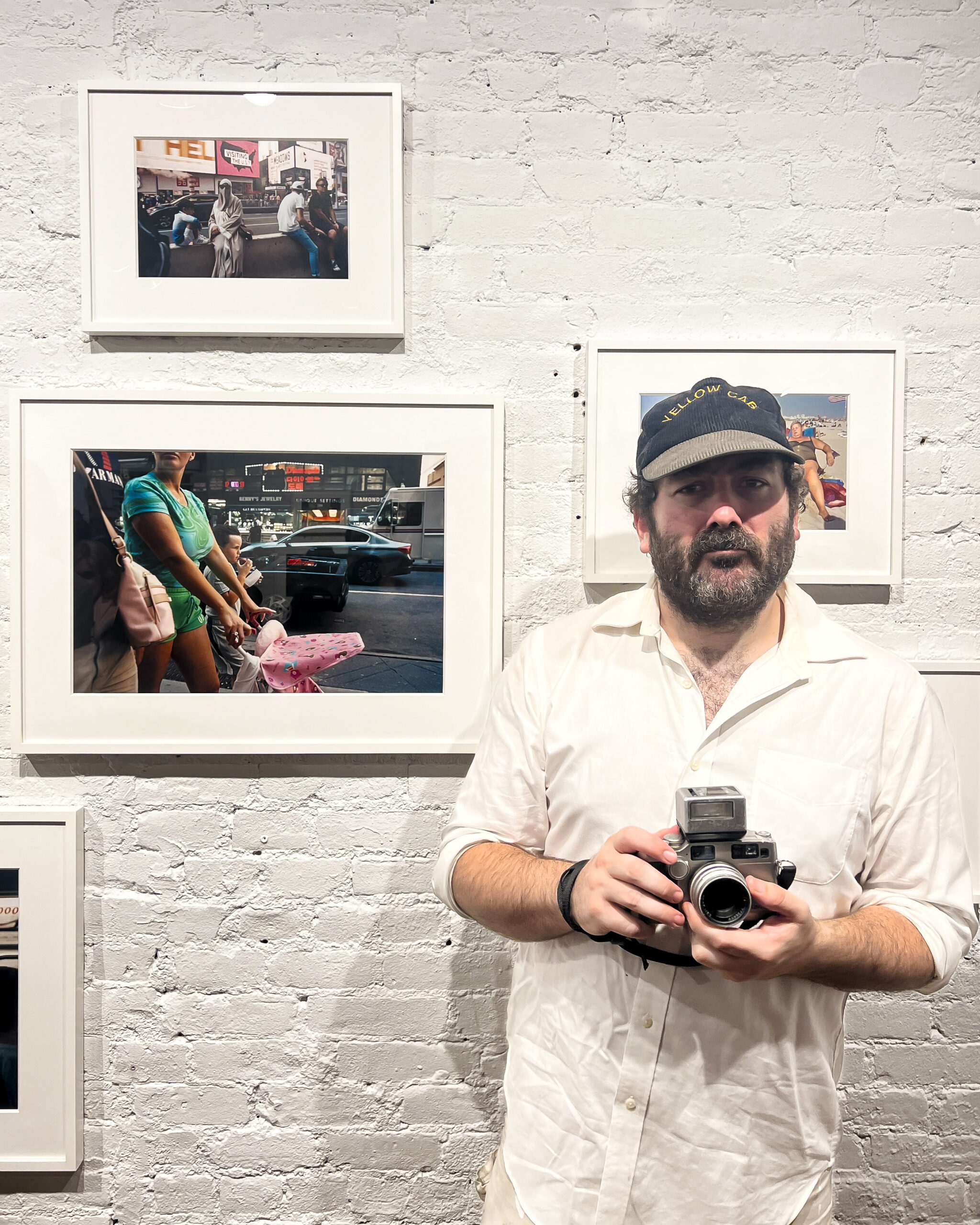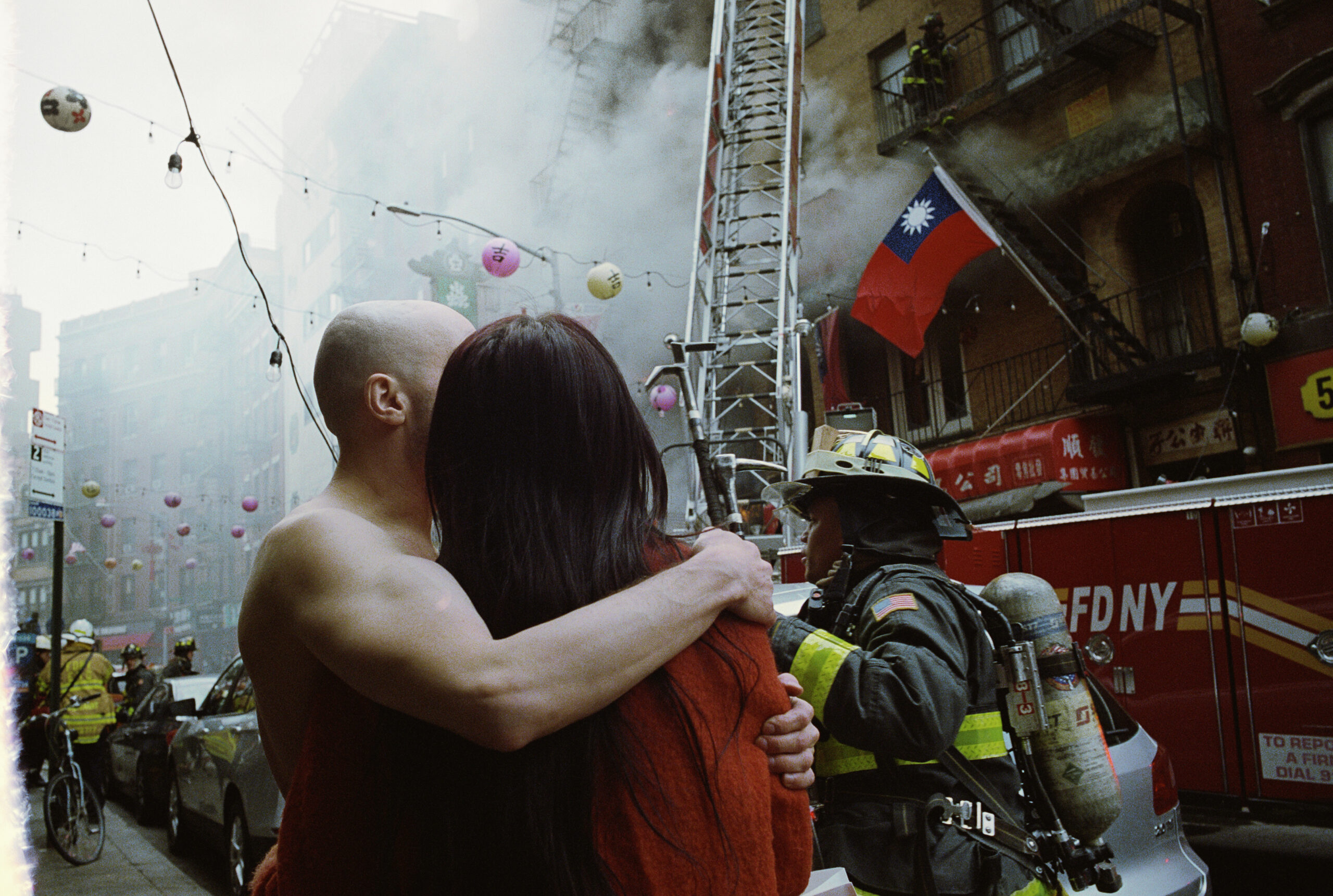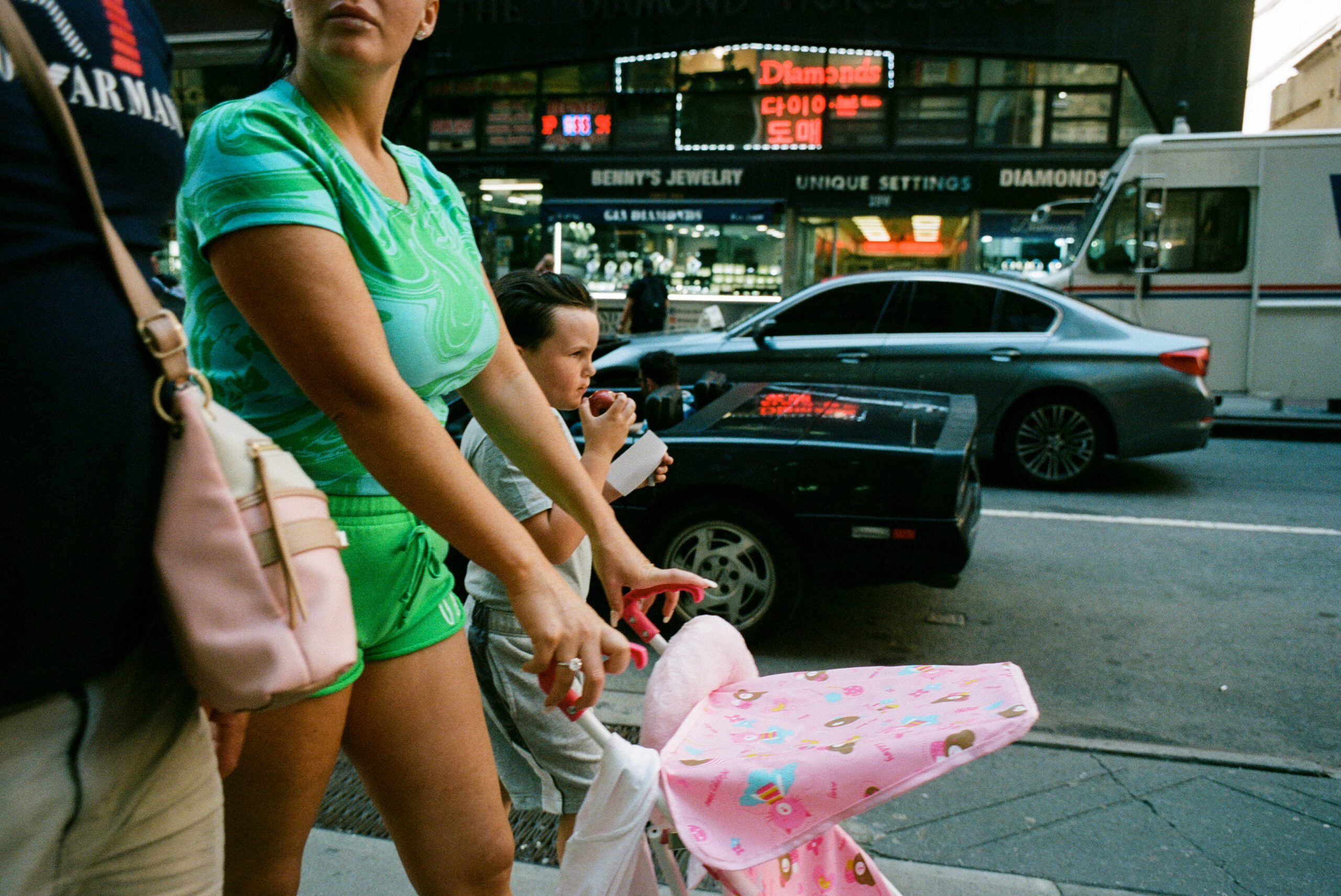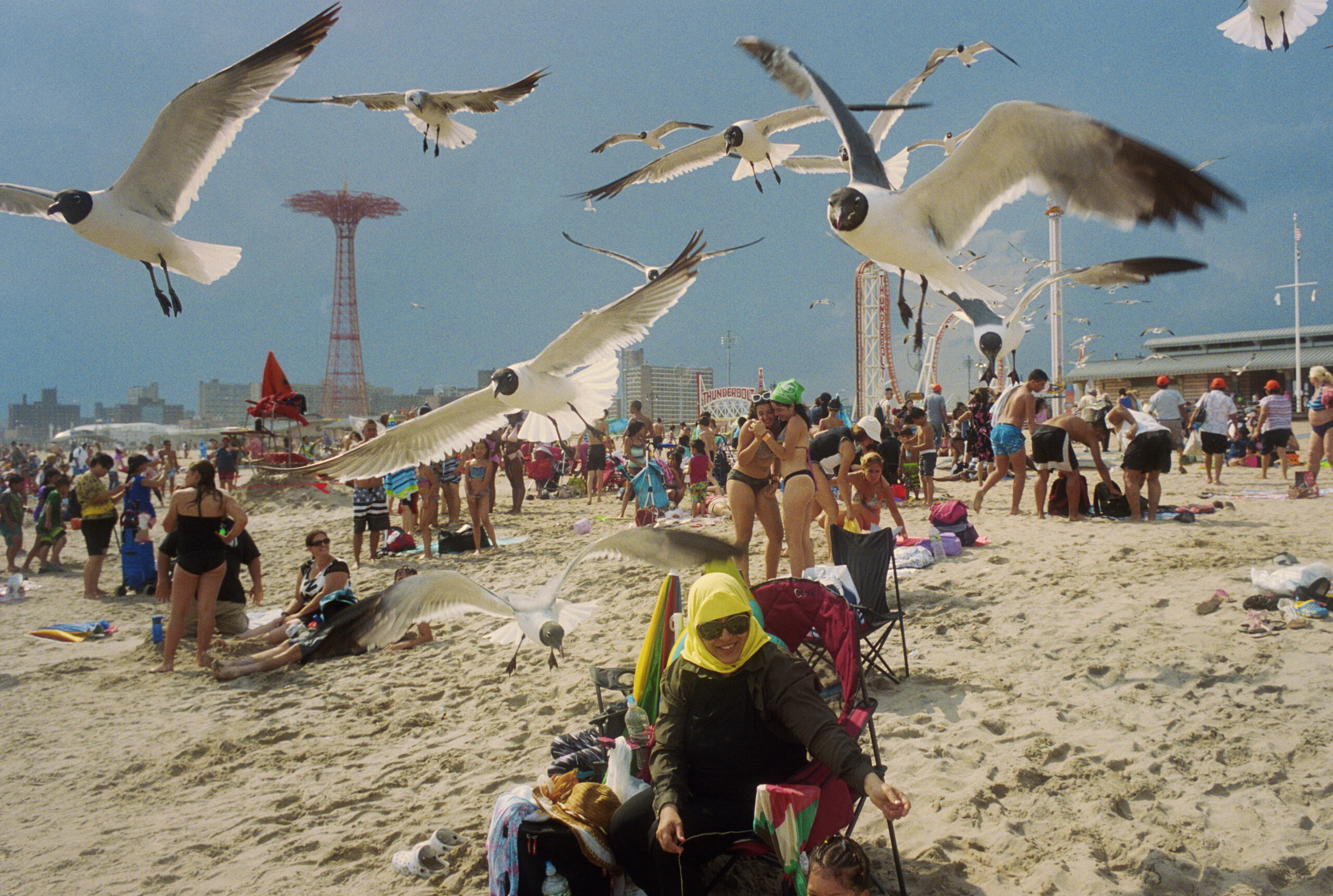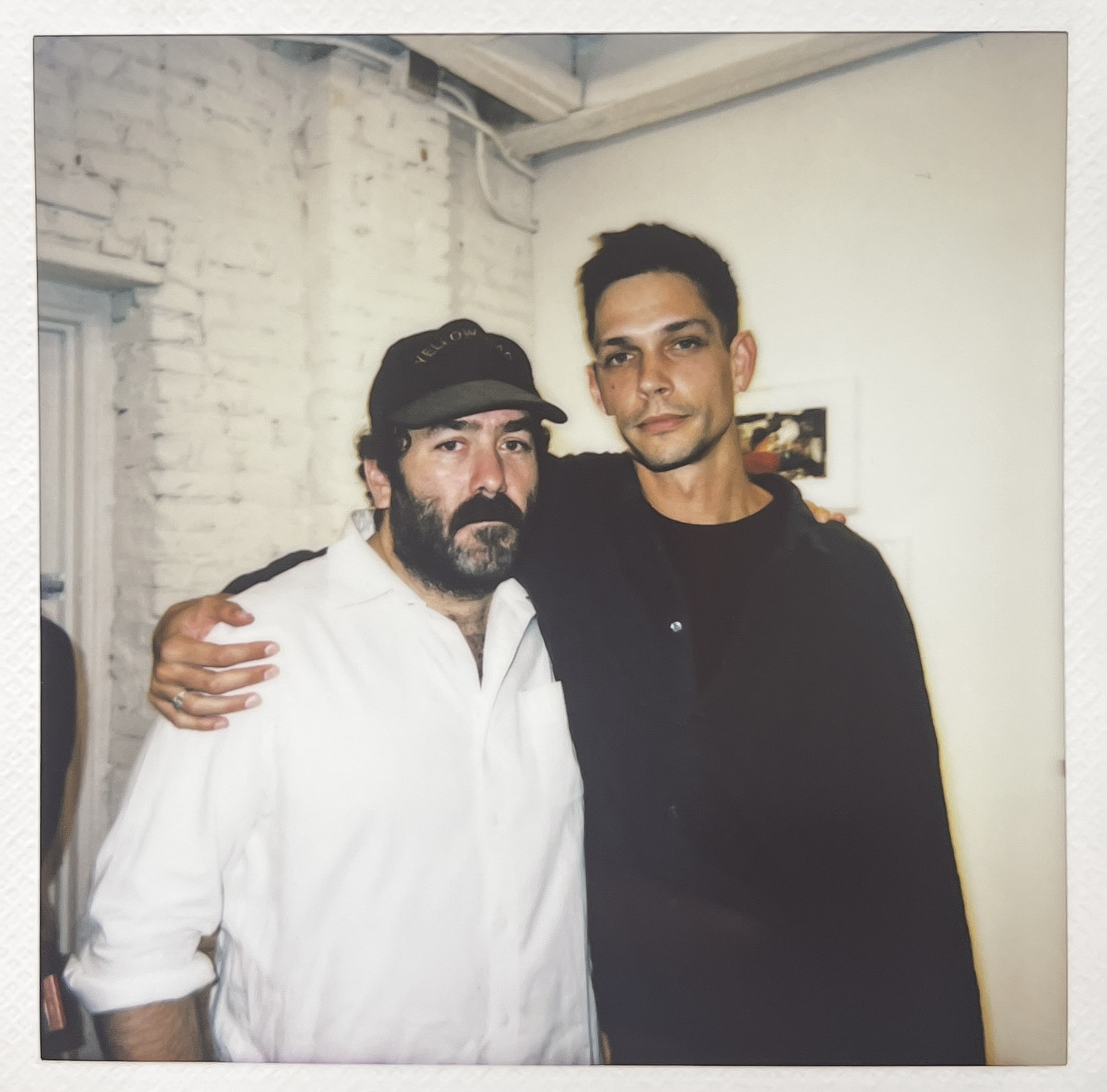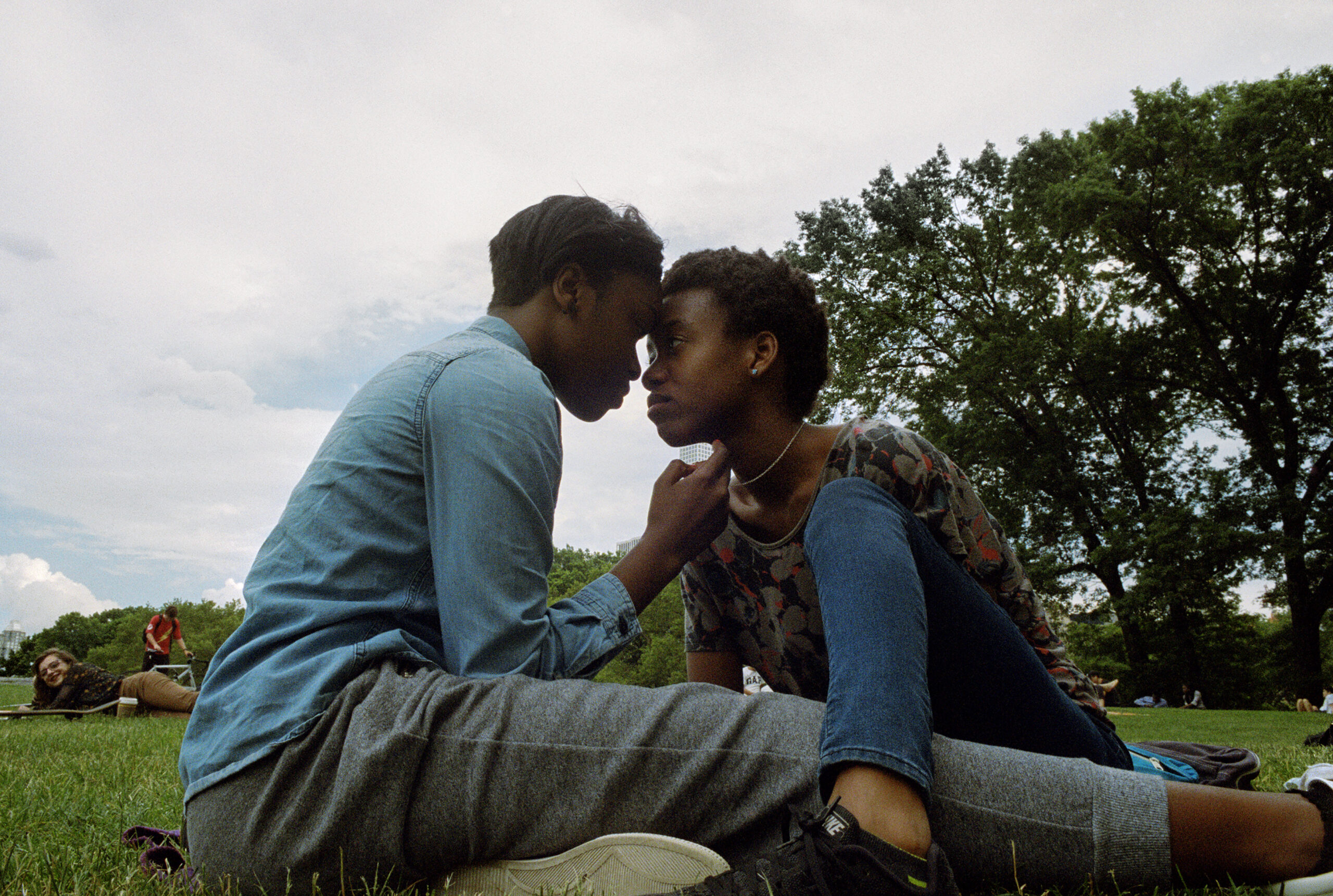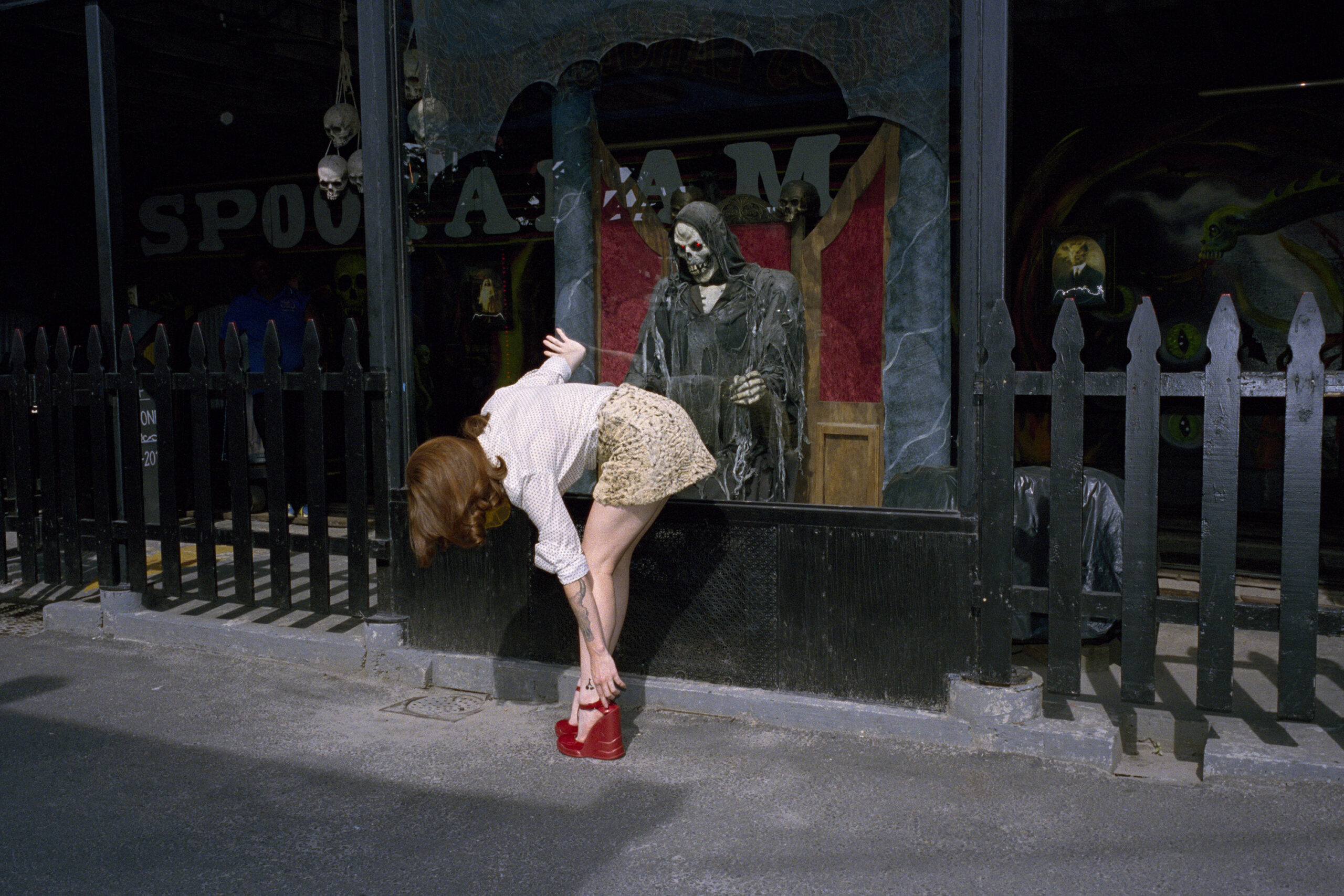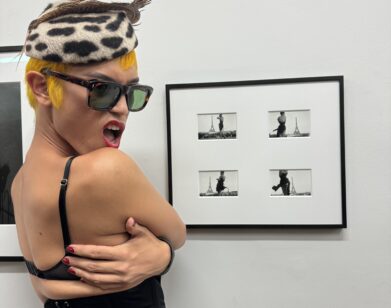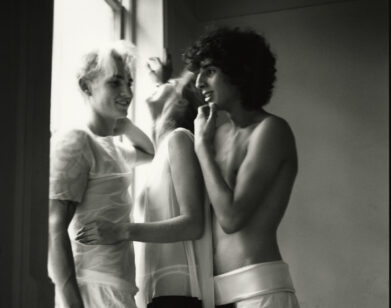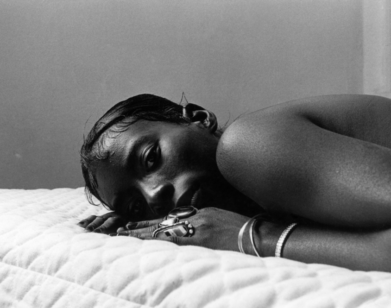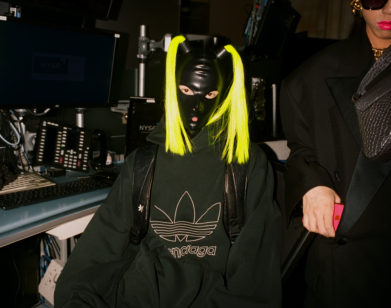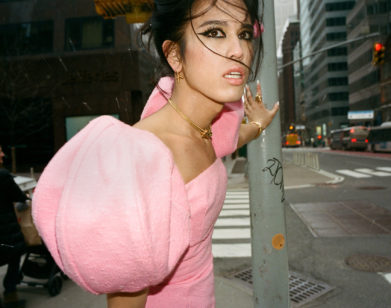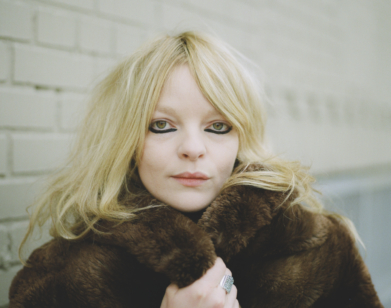OPENING
“Stupid and Unhinged”: Daniel Arnold on Shooting Austin Butler and His New Solo Show
“It’s overcommitment to a pretty unreasonable, irrational bit,” Daniel Arnold says of his daily schedule as a street photographer, which consists of prowling the streets of New York and snapping his shutter in order to distill the glorious pell mell of New York life in an image. Fittingly, on a steamy, and spooky-ish, Friday night, the street photographer known for his brazen BTS of celebrities, tourists in Times Square, and many an Interview Magazine cover opened his show New York Life, on view from October 27 to December 22 at New York Life Gallery, run by Ethan James Green, another friend of the mag.
After surviving the five floor walk up and the point-and-shoots swinging at me from every direction, Daniel and I snuck into a back room to debrief on the show, photographing Austin Butler for our Fall 2023 cover (“it just got so dumb,” he laughs), and the joy of gathering friends inside a packed gallery to put their phones down for an evening. Later, as the crowds drift away, Ethan James Green and I chat about the busy night and his admiration for the timelessness of Daniel’s photographs.
———
ELOISE KING-CLEMENTS: How are you feeling?
DANIEL ARNOLD: I’m doing well. I’m overwhelmed. I’ve been expecting to be overwhelmed for days, so it’s not as bad as I thought, but it’s going to be really weird to leave. The part before and the part after are very strange.
KING-CLEMENTS: Do tell.
ARNOLD: Well, the part before, I don’t really have an excitement setting, just dread and preparing for potential consequences. Then, when it’s happening, piece of cake, so when I get done and return to a normal control place, I’m like, “Oh my God. What did I talk about? What did I say?” It takes a minute to return to earth after being in this mode.
KING-CLEMENTS: Do you feel pressure?
ARNOLD: No, not now. The lead-up was a lot of pressure because I’m not, first of all, naturally interested in pictures on a wall, which is a tragic problem for a photographer.
KING-CLEMENTS: Why is that?
ARNOLD: I don’t know. Who cares? Pictures on a wall? But there’s a nice alchemy thing that happens when you fill a room with people who are invested and, I don’t know, this is your life moment where people from all corners and eras. It’s crazy.
KING-CLEMENTS: It’s kind of like your wedding.
ARNOLD: It is a lot like a wedding. I’m on crazy autopilot just trying to be available to everybody who walks up.
KING-CLEMENTS: Do you have a favorite photo?
ARNOLD: I had a nice experience in there, where someone came up to me and asked if I’d walk over to a photo with them and explain to them why I took it, because he felt it wasn’t like all the other pictures in the show. It’s a man, a woman and a child all in a row, and the kid is eating an apple. It’s this impossible accidental composition where you get this swirly effect that I definitely didn’t do on purpose. It was really nice to have that pointed out by a stranger, because it stays interesting to me. The best stuff happens by accident. The best photos are just the result of putting one foot in front of the other, way past the point of reason, and stacking shit up and seeing what comes back.
KING-CLEMENTS: What do you mean by way past the point of reason?
ARNOLD: I guess from the outside it would appear that I have this really good thing going and I wouldn’t argue, but the day-to-day doesn’t feel rational or responsible. It is wandering around looking. I’m 43 years old, it’s crazy! What do I think is going to happen to me? So, it’s funny in a room like this where it’s just pure validation from every angle, but most of the time, that’s not the experience. It’s overcommitment to a pretty unreasonable, irrational bit. At this point, not really knowing if it’s even good, because I keep it to myself. So this is a nice moment of surfacing.
KING-CLEMENTS: Coming up for air.
ARNOLD: Yeah, and that wasn’t the purpose. I just wanted to get people to this gallery and get everybody off their phone a little bit, have some in-person time, a little clubhouse. But it has been a real nice side effect that I get some validation.
KING-CLEMENTS: What did you tell the guy when he asked about the photo?
ARNOLD: I told him that I couldn’t have done it on purpose and that, to me, it’s a perfect picture. I marvel at that picture. I don’t think it would jump out to anybody as a good picture. It’s just one of these things that is the result of trying over and over again, most of the time getting it wrong and then once in a while…
KING-CLEMENTS: Do you like looking at your photos on the wall? Do you like printing them out?
ARNOLD: That part is really nice. That part is super-luxurious.
KING-CLEMENTS: Because you always just see it on a screen and then suddenly, it’s tangible.
ARNOLD: I see it on a screen and I have this obsessive, continuous tinkering relationship with all of it where I spend most of every night flipping back through and looking and looking. It takes a while because you have an emotional attachment to little practical successes, but then it’s not a good photo.
KING-CLEMENTS: Okay. Tell me a little about the Austin Butler cover shoot for Interview.
ARNOLD: Austin was a special one. It was really fun. It was really stupid and unhinged. [The shoot] was the day that the strike was supposed to start, so we had this looming three o’clock, or noon, deadline. We’re racing to get through enough pictures and it’s very serious and nervous and we’re all a little tense and boring. Then the strike got postponed until the next day while we’re on set. Because we had this super pent-up, anxious energy that had nowhere to go, all of a sudden it just spilled out all over the room. It got so dumb. Playing the saxophone in the bathroom and dumping cottage cheese into cat food. We were just laughing and being fools. It was really loose and really experimental. We had a really fun, fun time.
KING-CLEMENTS: Whose idea was the saxophone?
ARNOLD: I think most of the groundwork was laid by Mel. I love working for Mel because he gives me this weird playground to figure out. We did the thing with Jesse Plemons where he sent me to the swamp in New Orleans, and I almost drowned in the muck alongside a river.
KING-CLEMENTS: Those are insane.
ARNOLD: It’s uncommon to get that juicy of a world to play with. The Austin Butler one was in John Giorno barracks where William S. Burroughs used to bring his methadone dose every day and sit at his typewriter and shoot at the wall. It’s untouched. It was a very rare air in there, and that mixed really nicely with the chaotic stupidity of our nervous energy. It was really fun.
KING-CLEMENTS: How are you doing? How are you feeling?
ETHAN JAMES GREEN: I’m good. It was really nice seeing how many people showed up, crowds pouring in. I love Daniel’s work so much, he’s so humble and it’s cool to see how many people have been truly inspired by what he does. The amount of cameras that we had in here tonight was crazy.
KING-CLEMENTS: They’re everywhere you look. Has there been an insane lead up to this?
JAMES GREEN: It was a little crazy. We were scrambling a little bit today, but luckily we didn’t have any issues. It’s always crazy, but this one was smoother. We’re getting better at being a gallery.
KING-CLEMENTS: It’s been a year. Congratulations. How do you find owning a gallery?
JAMES GREEN: I love it. I never thought I would be doing this, and I think that’s why I love it so much.
KING-CLEMENTS: Why is that?
JAMES GREEN: Because it was always about my photography, but over the years, whether it’s mentoring people or giving advice, I loved being on the other side—working with artists and not being the artist. It’s always about collaboration. So many friends are always doing something, whether it’s a friend designing a poster…
KING-CLEMENTS: It’s a community. Do you have a favorite photo in the show?
JAMES GREEN: It’s really hard to pick one. I love the picture of the couple in the park, sitting. I asked Daniel about it and he said that that moment was happening and he approached them and asked if he could take a picture and they said yes, but they just kept going. I love that one. I love the fire one. There’s so many of the pictures that I just know, down the road, they’re going to be a reference for what today was. That’s how I see his work. It’s like you see the picture and it’s almost instantly cemented into history. It’s so cool because in the pictures you see so many locations in the city that all of us walk. His work, it validates “today,” in a way that sometimes I feel like we don’t see today. It’s always like, “Oh, it used to be so good in New York.” I mean, different things used to be so good, but with Daniel’s work, it’s really made me see today differently. There’s a picture of a little boy walking with his family, and he’s eating an apple. It looks like it’s from the fifties. The pictures look so timeless, but then you start to really look, and it’s actually today. I think it shows how we as people really do not change. It feels like things are so different, but really we don’t change.
KING-CLEMENTS: Yeah, it zooms out. Do you take street photos ever?
JAMES GREEN: Not really, no. I’m the type of photographer that I build, so I have so much control over my pictures and I think maybe that’s another reason why I love what Daniel does, because it’s the complete opposite of what I do. I look at it and I’m just so in awe.

